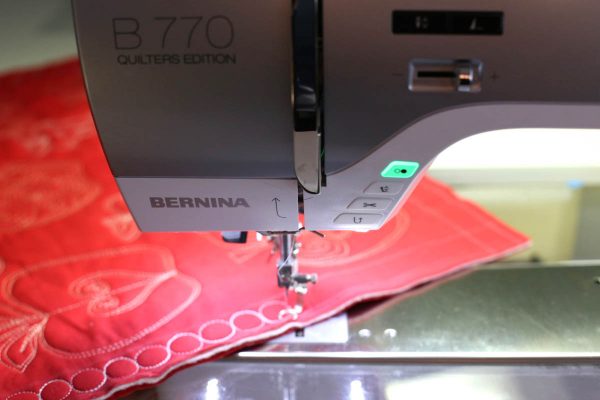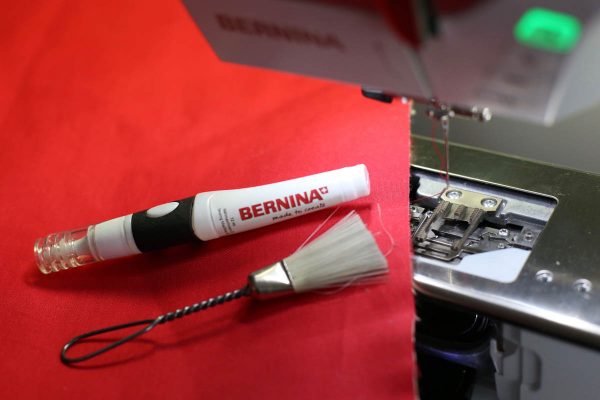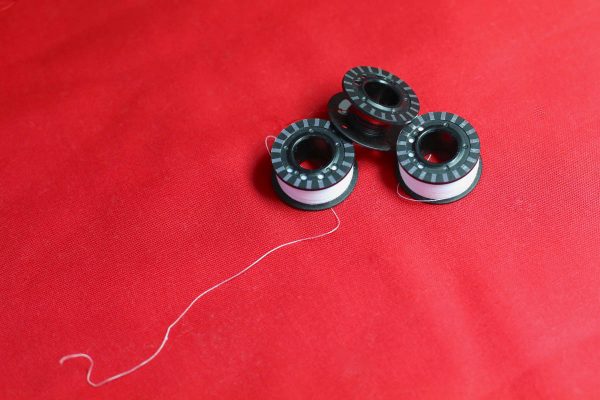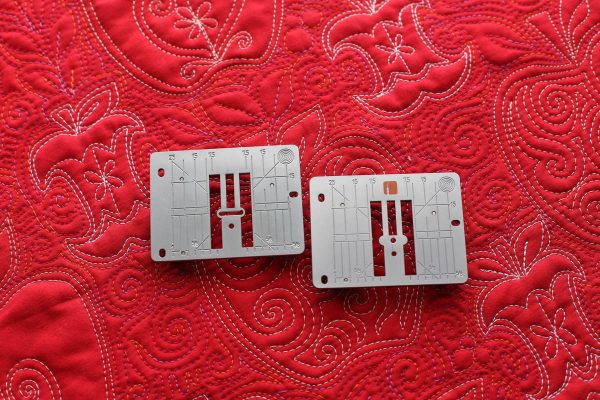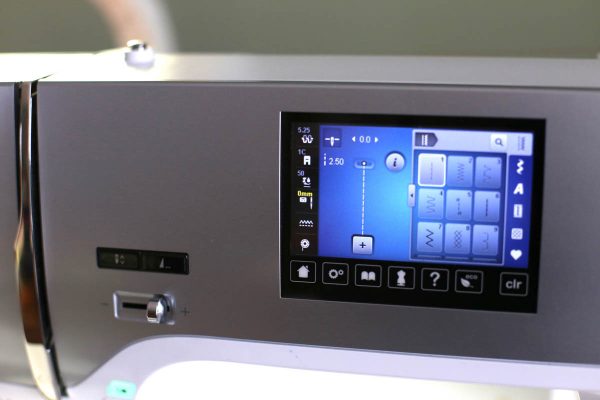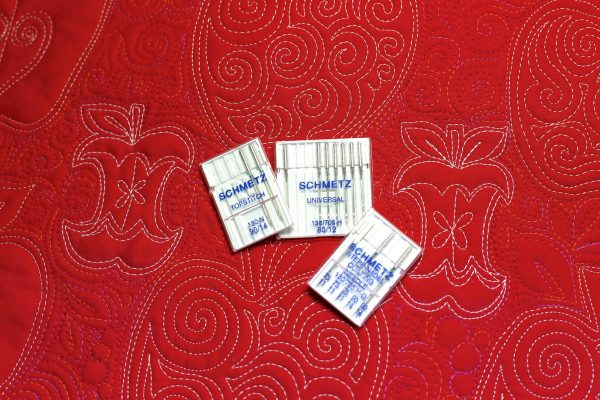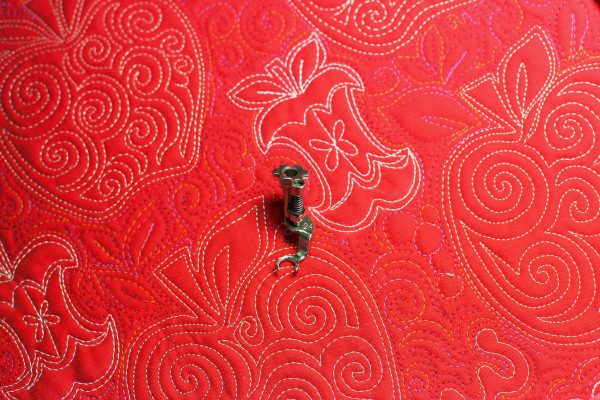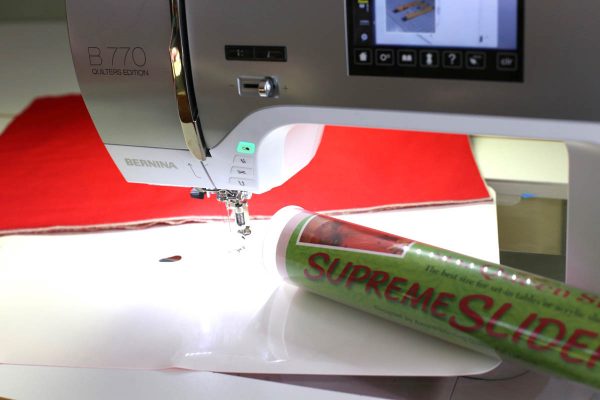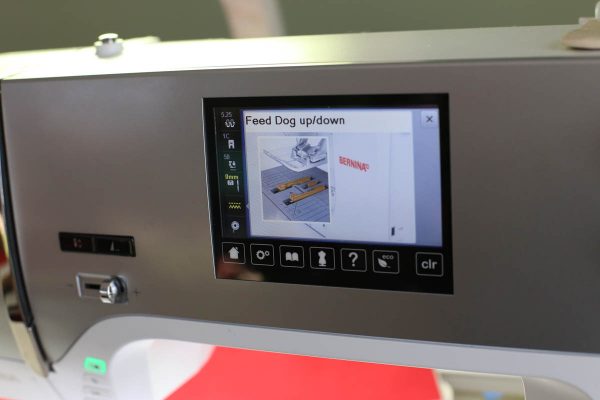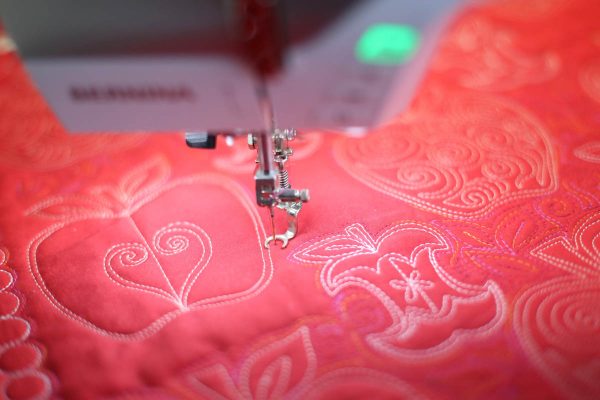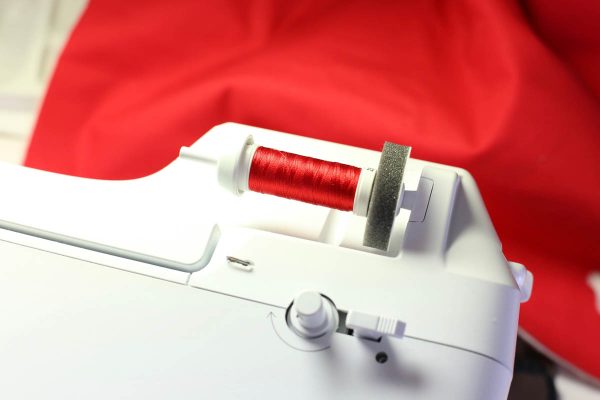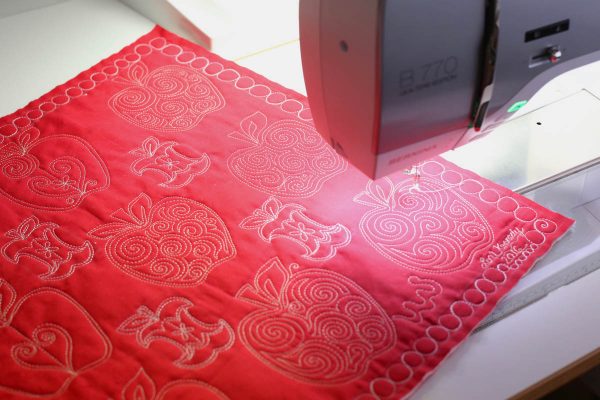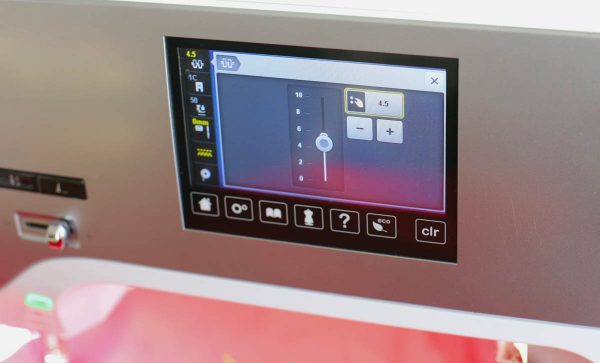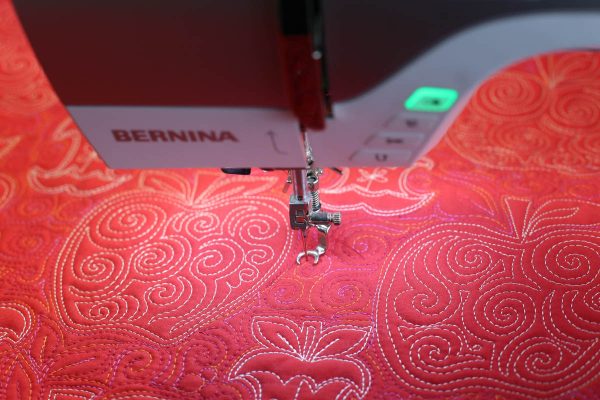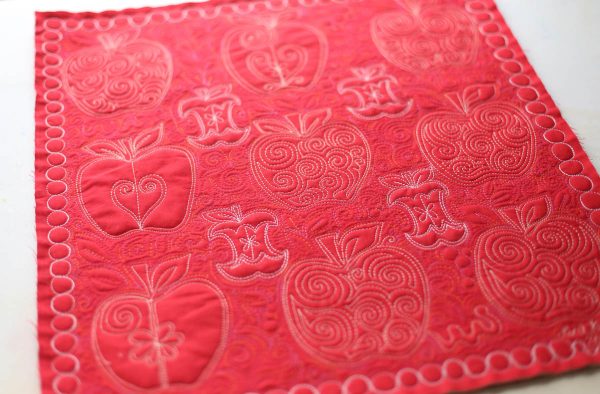M
Are you ready to machine quilt? In less than five minutes, you can have your machine ready to create gorgeous free motion quilting (FMQ).
Whether your sewing machine is old or new, like the BERNINA 770 QE that I use for all of my quilting, there are a few machine adjustments required to allow the quilt to move freely and to ensure perfect stitches.
- Clean and oil
- Thread the bobbin
- Attach a Straight Stitch Plate
- Insert a new needle
- Attach a Darning Foot
- Tape Down a Teflon Sheet
- Lower the Feed Dogs
- Set Needle Down Function
- Thread the top thread
- Stitch a sample
- Adjust tension
- Start quilting!
Clean and Oil
The rapid stitch rate (up to 1000 stitches/minute) of quilting over fabric and batting leads to lint build up in the bobbin case. Keep your bobbin case clear of lint and loose threads with frequent cleaning and oiling so the hook can make a perfect stitch.
Thread the Bobbin
Once you start quilting you won’t want to stop, so make extra bobbins. Even with BERNINA’s extra large bobbins, you’ll need at least three full bobbins to get started.
Attach a Straight Stitch Plate
The Straight Stitch Plate has a smaller opening than the Standard Stitch Plate used for general sewing. The narrow opening provides more support to the quilt as the needle penetrates it and prevents the fabric from being pushed into the needle opening.
The Straight Stitch Plate is essential to create beautiful quilting stitches.
If your machine has a Security Function, enter the Straight Stitch Plate option. Your machine will then prevent stitching a wider stitch and damaging the needle when you return to general sewing.
Insert a New Needle
There are many needle types that are appropriate for Free Motion Quilting including Universal, Embroidery, Denim, Quilting, and my favorite, the Topstitch needle. Choose the size of the needle to match the weight of your thread. Replace your needle whenever starting a new project for best possible stitch formation.
Attach a Quilting Foot
There are several BERNINA presser feet available for free motion quilting. Choose Darning Foot #9, Freehand Quilting Foot #29, Embroidery Foot #15, Drop Shaped Embroidery Foot #26, or my favorite, Freehand Embroidery Foot #24. I prefer Foot #24 because it is open-toed and offset, providing the greatest visibility.
Tape Down a Teflon Sheet (Optional)
Many quilters attach a Teflon sheet over the sewing machine bed to reduce friction while quilting. The sheet helps the fabric move smoothly and results in more fluid stitches. Although the Supreme Slider clings to the sewing table, I always tape it down to prevent slippage.
Lower the Feed Dogs
In normal sewing, the feed dogs advance the fabric with every stitch. In free motion quilting, the quilter controls the speed and the direction of the quilt without interference from the feed dogs. Lower the feed dogs (usually a button on the side of the sewing machine) before quilting. Alternatively, set the stitch length to zero and the feed dogs will remain in the original position, but will not advance to fabric with each stitch.
Set Needle Down Function
By setting the Needle Down function, every time sewing stops, the needle will be in the down position. This is helpful to keep a continuous line of stitching when stopping to adjust the quilt position.
Thread the Upper Thread
Thread the top thread as for normal sewing. Choose a decorative or embroidery thread for best results. Remember to have the presser foot in the “up” position for proper threading.
Stitch a Sample
Stitch a sample whenever starting to sew or re-threading to test tension, thread color, etc.
Adjust Tension
The tension settings on BERNINA sewing machines are set for straight stitch sewing with Metrosene thread in both the upper and bobbin thread. Metrosene is a 50 weight polyester general purpose thread. Free motion quilting involves a bit of tugging and pulling and a wide variety of threads. Consequently, it is likely that tension adjustments will be required. I usually lower tension on my BERNINA 770QE to around 4.25 for the thread/fabric/batting combinations that I use. Tension will require adjusting for each project and each day as factors like humidity can also affect tension.
Start Quilting!
Once your tension is adjusted, and your stitches look perfect, you are ready to stitch! For more detailed explanations of the steps above, consult your sewing manual.
For more than 100 free motion quilt tutorials (all FREE) as well as projects and inspiration, visit me at: www.theinboxjaunt.com.
Happy Stitching,
Lori

